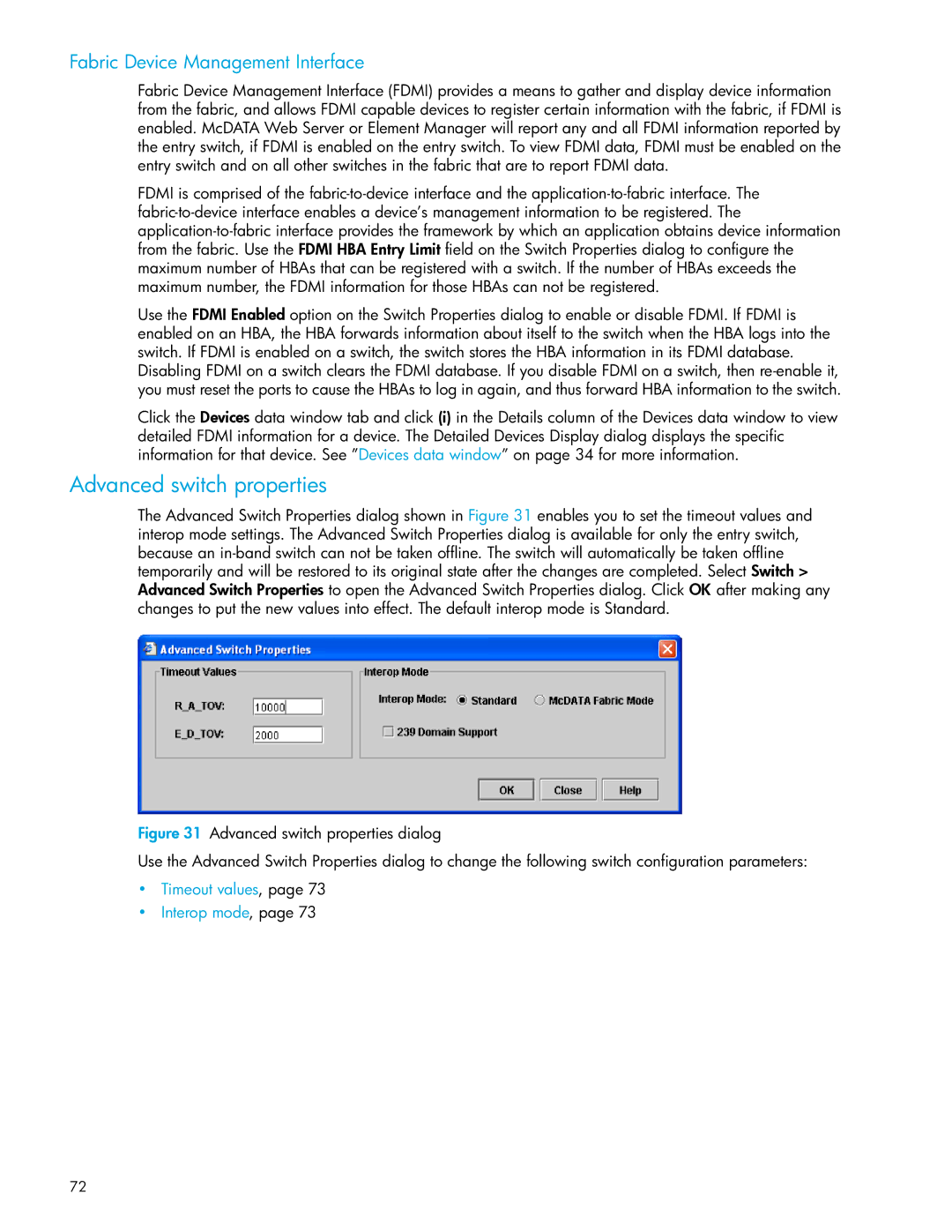
Fabric Device Management Interface
Fabric Device Management Interface (FDMI) provides a means to gather and display device information from the fabric, and allows FDMI capable devices to register certain information with the fabric, if FDMI is enabled. McDATA Web Server or Element Manager will report any and all FDMI information reported by the entry switch, if FDMI is enabled on the entry switch. To view FDMI data, FDMI must be enabled on the entry switch and on all other switches in the fabric that are to report FDMI data.
FDMI is comprised of the
maximum number of HBAs that can be registered with a switch. If the number of HBAs exceeds the maximum number, the FDMI information for those HBAs can not be registered.
Use the FDMI Enabled option on the Switch Properties dialog to enable or disable FDMI. If FDMI is enabled on an HBA, the HBA forwards information about itself to the switch when the HBA logs into the switch. If FDMI is enabled on a switch, the switch stores the HBA information in its FDMI database. Disabling FDMI on a switch clears the FDMI database. If you disable FDMI on a switch, then
Click the Devices data window tab and click (i) in the Details column of the Devices data window to view detailed FDMI information for a device. The Detailed Devices Display dialog displays the specific information for that device. See ”Devices data window” on page 34 for more information.
Advanced switch properties
The Advanced Switch Properties dialog shown in Figure 31 enables you to set the timeout values and interop mode settings. The Advanced Switch Properties dialog is available for only the entry switch,
because an
changes to put the new values into effect. The default interop mode is Standard.
Figure 31 Advanced switch properties dialog
Use the Advanced Switch Properties dialog to change the following switch configuration parameters:
•Timeout values, page 73
•Interop mode, page 73
72
